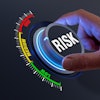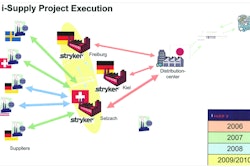
Fortune 500 companies that are successfully managing their global supply chains have at least one thing in common: They shifted perspectives when it comes to global trade management (GTM) technology and established a new hierarchy of what is important. It is a perceptual change that I have been advocating for years.
Companies once thought of content as being one and the same as GTM. They purchased all kinds of information whether they needed it or not. After seemingly endless acquisitions, they found themselves with many separate silos of information, and no centralized place where this information could be inputted and used to power their global supply chain process. Unfortunately, they learned the hard way that content is not the same as a GTM system.
I often use the analogy of the car and fuel to explain this phenomenon to prospects interested in GTM technology. I tell my customers they must first decide whether they want to purchase a car or the fuel. What that means is simple: If you want to buy a car, it comes equipped with all the accoutrements. In purchasing a car, you immediately acquire all the technology needed to manage your global trade in one place. And, like any automobile, your GTM car comes with the ability to pull into any gas station (content provider) and pump its content into your car (GTM system) as needed. However, fuel (content) offers no other capability than to power fuel-dependent technology. Without technology, fuel is powerless.
I understand the dilemma. Companies that operate globally know that every country has its own regulations and documentation requirements, and the penalties for noncompliance can be steep financially—as well as create major delays in terms of time to market. Responses to terrorism only up the ante. So, in response, firms focus on buying bits and pieces of content from different providers, and partial solutions in an attempt to manage import and export compliance. But, at the end of the day, none gained in efficiency, productivity, compliance or control over their global supply chain.
What they had were buckets of information that often found their way into spreadsheets that generated errors, resulted in missed deadlines, and required more and more personnel to manage them. Others tried to ameliorate the situation by attempting to automate the GTM function within their enterprise resource planning (ERP) systems. Most spent inordinate amounts of money to customize ERP systems, yet never truly achieve the desired automation or control over their supply chains.
Today, the emphasis shifted toward buying the car—a system in which all the required solutions are centralized and designed for one purpose—to manage global trade compliantly. Companies understand they need to be able to put all their information in one place, configure their business practices, track global trade, perform audit checks and monitor activity via information displayed in a comprehensive dashboard. Beyond personnel reductions, automating GTM yields greater productivity, efficiency and compliance.
Once the decision to buy a car rather than fuel is made, the next steps are clear. First, look for vendors that truly sell cars. Many sellers are focused on content and try to guide firms away from buying the car. Resist the temptation and never take your eyes off the ultimate goal of purchasing a car. Find a car that easily accommodates all kinds of fuel and can adapt to your changing business needs. Recognize that many vendors do offer cars with some fuel included. That is a good thing.
After buying the car, analyze what kind of fuel your car needs immediately. Many companies believe they need everything, including harmonized tariff codes for every country in the world and millions of lists capturing denied parties. Define where you do business. If you do business in five different countries, start with the regulations, harmonized tariff codes, etc., for those countries. If you are exporting to an overseas division of your firm, the U.S. Customs and Border Protection’s (CBP’s) downloadable Consolidated Screening List may be fine. But if, for example, your company is involved in e-commerce and exporting worldwide, then a more in-depth list of denied parties is needed.
After identifying your car and your basic fuel requirements, acquire different fuels that correspond to the ebb and flow of your business practices. Pull into the different gas stations and buy the needed fuel, knowing that your car can keep it in one place and put it to use as needed. Remember, too, that by focusing on purchasing a car, companies may be able to participate in programs such as CBP’s Trusted Trader Program that offers participants key incentives that make the supply chain more efficient by reducing or eliminating things, such as random non-intrusive inspections, penalty offsets on CBP penalty mitigation decisions and much more.
Sitting behind the wheel of your car, you are now cruising down the global trade business highway fully in control of your supply chain because you possess all the management tools you need, and the ability to look down at the dashboard and see that all is working according to your business plan. You have all the fuel you need for now and the ability to successfully acquire any additional fuel from the content provider of your choice.
The takeaway is simple: Managing your supply chain is not about amassing stockpiles of content; it is about managing your global process. Technology, not content, gives you the power to manage and succeed.













![Pros To Know 2026 [color]](https://img.sdcexec.com/mindful/acbm/workspaces/default/uploads/2025/08/prostoknow-2026-color.mduFvhpgMk.png?ar=16%3A9&auto=format%2Ccompress&bg=fff&fill-color=fff&fit=fill&h=135&q=70&w=240)




